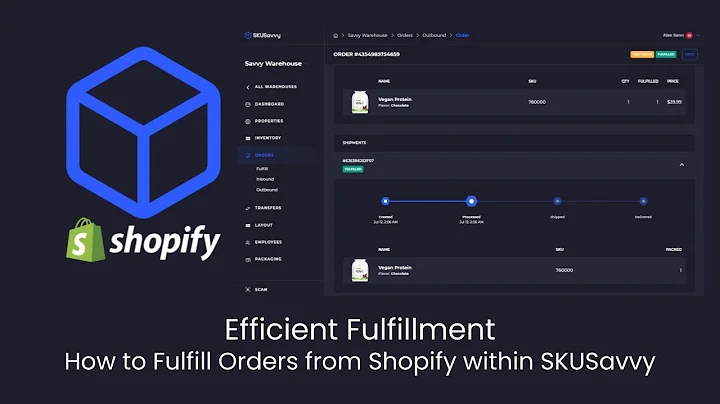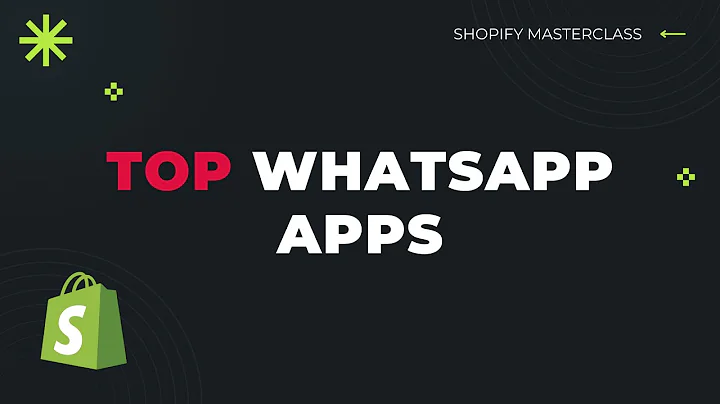Building a Successful Fashion Brand: A Step-by-Step Guide
Table of Contents
- Introduction
- Education in the Fashion Industry
- Writing a Business Plan
- Executive Summary
- Company Overview
- Market Analysis
- Products and Services
- Customer Segmentation
- Marketing Plan
- Logistics and Operations Plan
- Financial Plan
- Developing Your Brand Identity
- Visual Identity
- Brand Tone of Voice
- Brand Story
- Brand Values
- Creating a Brand Book
- Generating Creative Concepts
- Finding Inspiration in Fashion History
- Techniques for Producing New Ideas
- Utilizing Pinterest for Inspiration
- Planning and Timing Your Collections
- Understanding the Seasonal Cycle
- Exploring Seasonless Fashion
- Trend Forecasting
- Collaboration with Vendors and Partners
- Creating a Work-back Schedule
- Production and Manufacturing
- Prototyping and Design Refinement
- The Importance of Fit Models
- Multiple Rounds of Fittings
- Finding the Right Manufacturer
- Sourcing Fabrics and Wholesalers
- Sales Strategies
- Consignment vs. Wholesale
- Setting up a Wholesale Portal
- Utilizing Online Platforms like Fair.com
- Selling Online
- Optimizing Your Website
- Creating an Engaging Homepage
- Designing a Persuasive Product Page
- Balancing Inventory and Lead Times
- Marketing Your Fashion Brand
- Leveraging Email Marketing
- Social Media Advertising
- Reaching Out to Publications and Influencers
- Learning from Mistakes and Gathering Customer Feedback
- Conclusion
Starting a Fashion Line: From Branding to Sales
Are you passionate about the fashion industry and dream of creating your own clothing brand? Starting a fashion line involves much more than designing beautiful clothes. It requires mastering branding, manufacturing, retailing, and other crucial aspects. In this comprehensive guide, we will take you through the step-by-step process of building your fashion brand from start to finish.
Education in the Fashion Industry
While formal education in the fashion industry is valuable, it is not a prerequisite for success. Many entrepreneurs have built successful fashion businesses without any formal training. However, if you wish to enhance your knowledge and skills, you can consider taking courses or attending workshops available online or through colleges and universities.
Writing a Business Plan
A well-thought-out business plan is essential for clarifying your goals and attracting potential investors. Divide your business plan into distinct sections, including the executive summary, company overview, market analysis, products and services, customer segmentation, marketing plan, logistics and operations plan, and financial plan. Each section plays a crucial role in demonstrating the feasibility and potential of your fashion business.
Developing Your Brand Identity
Your brand identity goes beyond the design of your collections and logo. It encompasses your photography style, website aesthetics, sustainability statement, and more. Start by creating a strong visual identity that includes your logo, brand colors, typography, and photography. Craft a unique brand tone of voice to effectively communicate with your target audience. Develop a compelling brand story that resonates with your values and mission. Finally, establish clear brand values that align with your company's purpose.
Generating Creative Concepts
Drawing inspiration from fashion history and existing ideas can help you create innovative concepts for your clothing line. Explore fashion archives, books, and magazines to gain insights into different periods and styles. William Bernbach's book, "A Technique for Producing New Ideas," provides valuable guidance on generating fresh and original concepts. Online platforms like Pinterest offer a vast array of searchable images to stimulate your creativity.
Planning and Timing Your Collections
Understanding the seasonal cycle of the fashion industry is crucial for successful planning. Traditional fall/winter and spring/summer collections follow a specific timeline. However, a new movement called seasonless fashion aims to slow down the social and environmental impact of the industry. To stay on track, invest time in trend forecasting by immersing yourself in various domains like music, science, and politics. Collaborate with vendors to discuss timelines, including pattern makers, fabric suppliers, and production facilities. Create a detailed work-back schedule and ensure it is feasible for your team to meet the desired deadlines.
Production and Manufacturing
Prototyping and refining your designs play a vital role in achieving the desired fit and aesthetic for your garments. Collaborate with fit models who represent your target audience to ensure your designs flatter different body types. Conduct multiple rounds of fittings to perfect the prototypes before entering the production phase. Finding the right manufacturer and sourcing quality fabrics and wholesalers are critical steps in the manufacturing process. Utilize online directories, platforms like Compass and Maker's Row, and seek recommendations from your network.
Sales Strategies
When it comes to sales strategies, you have two primary options: consignment and wholesale. Consignment allows retailers to pay you once the items sell, while wholesale requires upfront payment. In the early stages, consignment may be a more attractive option for retailers due to lower risk. Consider setting up a password-protected wholesale portal on your website or using apps like Wholesale Club. Explore platforms like Fair.com, connecting buyers and wholesalers, to expand your reach.
Selling Online
Treating your website as your virtual storefront is crucial for online success. Optimize your homepage to provide clear navigation and reflect your brand values. Focus on creating persuasive product pages that provide thorough product information, including multiple photos, size guides, and detailed descriptions. Incorporate keywords relevant to your products in the content to enhance search engine visibility. Ensure seamless logistics and operations, balancing inventory levels and lead times to meet customer expectations.
Marketing Your Fashion Brand
Building brand awareness and attracting customers require effective marketing strategies. Start by building an email list and utilizing email marketing to nurture customer relationships. Social media advertising, particularly on platforms like Facebook, can help create demand, although it requires experimentation and ongoing optimization. Reach out to publications and influencers in the fashion industry to secure press coverage and leverage their networks. Utilize user-generated content and collaborations to showcase your brand and products to a wider audience.
Learning from Mistakes and Gathering Customer Feedback
One common mistake is neglecting customer feedback. Actively seek feedback through surveys and conversations, both in-person and online. Adapting and improving your products based on customer input is crucial for long-term success. Stay agile and open to pivoting your strategies and designs as you gather valuable insights. Embrace continuous learning and evolution in response to market demands and customer preferences.
Starting your own fashion line is an exciting journey that demands creativity, resilience, and business acumen. By following these steps and continually refining your brand and products, you can establish a thriving fashion business that resonates with your target audience.
Do you want to dive deeper into each topic and learn more about building your fashion brand? Check out the accompanying video and its downloadable business plan template to support you in every step of the process. Remember, success in the fashion industry takes time and persistence, so keep pushing forward and embracing every stage of your entrepreneurial journey.
Highlights
- Building a fashion brand requires more than just designing clothes; it involves mastering various aspects like branding, manufacturing, and retailing.
- Formal education in the fashion industry can be beneficial but is not necessary for success.
- Writing a thorough business plan is crucial for clarifying goals and attracting investors.
- Developing a strong brand identity involves creating a visual identity, defining a brand tone of voice, crafting a compelling brand story, and establishing brand values.
- Creativity can be sparked by exploring fashion history, utilizing techniques for producing new ideas, and finding inspiration on platforms like Pinterest.
- Planning collections includes understanding the seasonal cycle, trend forecasting, collaborating with vendors, and creating a work-back schedule.
- Production and manufacturing require prototyping, fittings, finding the right manufacturer, and sourcing quality fabrics and wholesalers.
- Sales strategies include consignment and wholesale, with options to set up wholesale portals and explore online platforms like Fair.com.
- Selling online necessitates optimizing websites, creating engaging homepages and product pages, and balancing inventory and lead times.
- Marketing fashion brands involves leveraging email marketing, social media advertising, press coverage, and influencer partnerships.
- Learning from mistakes and gathering customer feedback are vital for continuous improvement and meeting customer demands.
FAQ
Q: Do I need formal education in the fashion industry to start my own clothing brand?
A: While formal education can be helpful, it is not necessary for success. Many entrepreneurs have built successful fashion businesses without any formal training. However, staying informed through online courses and workshops can enhance your knowledge and skills.
Q: How can I create an effective brand identity for my fashion brand?
A: To create a strong brand identity, focus on your visual identity, brand tone of voice, brand story, and brand values. Develop a unique logo, use consistent brand colors and typography, establish a clear tone of voice, create a compelling brand story, and define values that align with your company's purpose.
Q: How can I plan and time my collections effectively?
A: Planning and timing collections involves understanding the seasonal cycle of the fashion industry, trend forecasting, collaborating with vendors, and creating a detailed work-back schedule. Consider the traditional fall/winter and spring/summer cycles or explore the emerging trend of seasonless fashion.
Q: What are the essential steps in the production and manufacturing process?
A: The production and manufacturing process includes prototyping, refining designs through fittings, finding the right manufacturer, and sourcing quality fabrics and wholesalers. Collaborate with fit models, communicate your vision clearly, and prioritize quality control to ensure the final product meets your standards.
Q: How can I effectively market my fashion brand?
A: Effective marketing strategies for fashion brands include building an email list and utilizing email marketing, utilizing social media advertising, reaching out to publications and influencers for press coverage, and leveraging user-generated content and collaborations. Focus on building brand awareness and engaging your target audience.






















